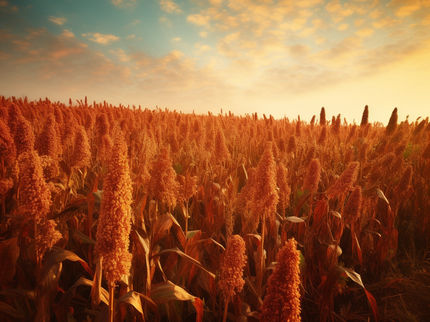Minnesota wild rice rule irks industry and environmentalists
Advertisement
The Minnesota Pollution Control Agency kicks off a week of public hearings Monday on changing a water quality standard that's meant to protect wild rice, a proposal that has managed to anger environmentalists and industry alike.
The proposal would change Minnesota's standard for sulfate discharges into waters where wild rice grows from the current flat limit of 10 milligrams per liter to a more complicated formula based on the characteristics of individual lakes and streams. Here's a look at some of the issues:
THE SULFATE STANDARD
Minnesota's existing standard, adopted in 1973, is based on research from the 1930s and 40s that found wild rice doesn't grow well in waters with higher sulfate levels.
When the state finally moved toward enforcing the standard several years ago, it triggered pushback from the iron mining industry and communities that operate wastewater treatment facilities. They said complying would be too expensive and challenged the validity of the old science.
The 2011 Legislature directed the state agency to study whether the old standard needed updating based on new science. The ensuing research found that sulfates by themselves aren't the problem. The problem is that sulfates in the water get converted by bacteria in sediments into sulfides that are toxic to wild rice plants. The agency says the research also found that iron in sediments tends to neutralize sulfides, while organic carbon leads to more sulfides. The proposed rules are a lake-by-lake approach intended to limit sulfides to 120 micrograms per liter.
"We believe the changes we're proposing are an innovative and precise approach to protecting wild rice," MPCA Commissioner John Linc Stine has said.
THE IMPORTANCE OF WILD RICE
Wild rice, also called manoomin, is more than just an important food for American Indian tribes in the upper Midwest, it's central to the Ojibwe migration story, which holds that their ancestors in the East were instructed by the Creator to go west to "where the food grows on the water."
Native American activists aren't just worried about sulfates. The potential threat to wild rice waters is a main reason why tribal groups oppose Enbridge Energy's proposal to replace its aging Line 3 crude oil pipeline across northern Minnesota with a new pipeline that would follow a new corridor much of the way.
INDUSTRY OPPOSITION
The Iron Mining Association of Minnesota opposes the proposed new standard. It says the science is still flawed and there's no proof it will protect wild rice. But it says the costs to mining companies and wastewater treatment facilities of complying would exceed $1 billion. Mining supporters plan to rally before marching to Tuesday's hearing in Virginia, Minnesota. They've held two public events this week to prepare.
ENVIRONMENTAL OPPOSITION
Environmental groups are urging their supporters to attend the hearings, too.
WaterLegacy, the Minnesota Environmental Partnership and several tribes say the state should keep - and enforce - the existing standard instead of replacing it with an equation they say is unenforceable and would allow more sulfate pollution in some wild rice waters. They cite research by University of Minnesota Duluth biologist John Pastor that undercuts the theory that iron protects against sulfides.
They also say the agency's proposed list of 1,300 wild rice waters missed water bodies that should have been on the list.
THE HEARINGS
The hearings will be Monday in St. Paul, Tuesday in Virginia, Bemidji on Wednesday, Cloquet on Thursday and Brainerd on Friday. There will also be a public videoconference Nov. 2 from the state agency's offices in Detroit Lakes, Duluth, Mankato, Marshall, Rochester and St. Paul.
The Office of Administrative Hearings is taking written comments through Nov. 22.
The agency has not set a deadline for deciding on the new rules, which also require approval from the U.S. Environmental Protection Agency.(dpa)



































































